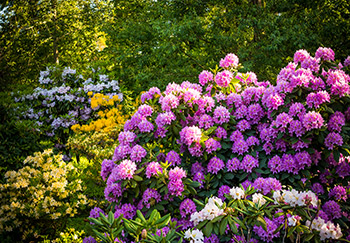Ericaceous Composting and Plants
September 10th, 2020 | Categories
You might think, given its name and general mystery surrounding it, that ericaceous compost is a specialist product, designed to really give topflight gardeners the cutting edge when growing all manner of exotic and delicate plants. The truth is, you’ll find ericaceous compost in any garden centre, and it is in fact a product you will need should you wish to grow anything from a certain group of fairly common and popular plants.
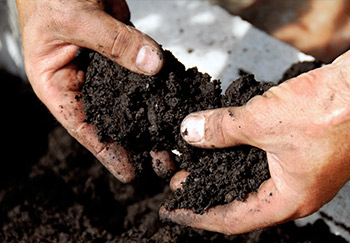
But What is Ericaceous Compost and What Does it Do?
Ericaceous compost takes its name from the plant family Ericaceae. Even if you haven’t heard of this, you’ll certainly be familiar with some of this family’s more famous members, such as the rhododendron and the azalea – these are all plants that require an ericaceous compost to grow. What unites the many plants that will require this compost is that they are all so-called ‘lime-hating’ plants, meaning they require an acidic soil in which to grow, and an acidic compost to nourish them.
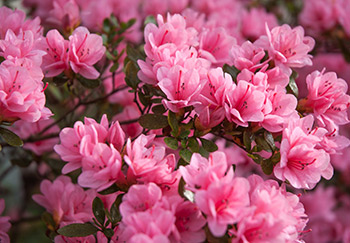
The handy thing is that any growing guide will point out if a plant is lime-hating and requires an ericaceous growth medium. And you’ll be in pretty esteemed company amongst such plants. The list of ericaceous plants is fairly substantial and includes exotic beauties and firm garden favourites alike. It’s not uncommon for gardeners to dedicate container displays to solely ericaceous plants. There’s a lot to be said for displays involving the delights of magnolia and azaleas, or edible patches including blueberries, raspberries and cranberries.
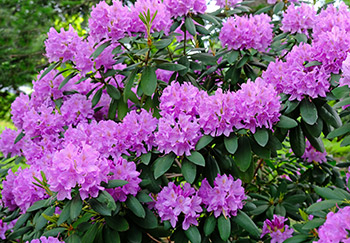
What Will Grow in Ericaceous Compost?
As mentioned, ericaceous compost is for ericaceous plants! Commonly called lime-hating, that’s those that do not tolerate the higher pH of alkaline soils and will only grow well in acidic soils. The term acid-loving is another which is sometimes used interchangeably. The only distinction with this term is that it describes plants which prefer acidic soils but will at least tolerate a slightly higher pH; ericaceous plants, on the other hand, require completely ericaceous soil.
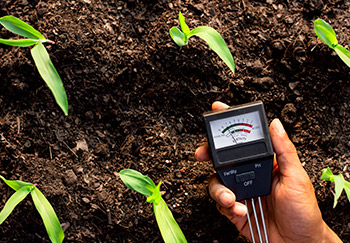
If ericaceous plants are placed in alkaline soil, you’ll find that their foliage will turn yellow, a condition known as lime-induced chlorosis. Such plants will not flower as well and, ultimately, they will die. This is because specific nutrients needed by ericaceous plants, such as iron, become insoluble and therefore inaccessible to the plant in higher pH soils.
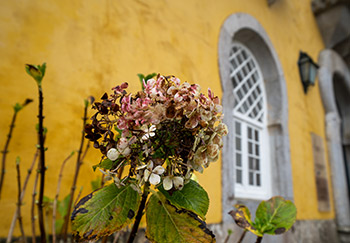
Acidic soils occur often in nature and, sure enough, in areas with high amounts of acidic soils we see a great natural prominence of these plants, lending these areas a distinct character. That’s why places such as Cornwall are known for the azaleas and camellias which are common there. Ericaceous plants look well together in such settings, and this is something you can replicate in the garden!
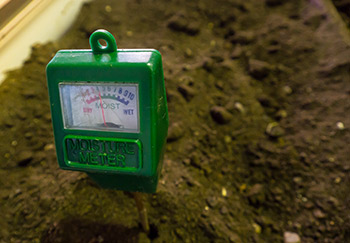
So, for what types of plants will you require an ericaceous compost? It might be worth coming up with a list of the most common ericaceous and acid-loving plants:
- Azealia
- Camellia
- Rhododendron
- Calluna
- Enkianthus
- Gaultheria
- Kalmia
- Pieres
- Magnolia
- Raspberry
- Blueberry
- Juniper
- Acer (Japanese Maple)
- Skimmia
There are of course more besides those listed here. If you find yourself in any doubt, any growing guide or general information page on these plants will alert you to this important detail.
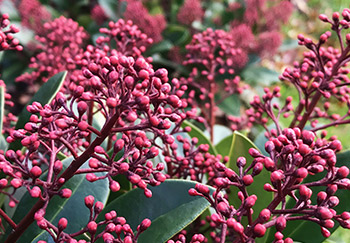

What Will Grow in Ericaceous Compost?
In the vast majority of cases, you’ll want to create your ericaceous display in a container rather than a patch in the garden. The reason for this isn’t only that it’s easier to control the soil type in a container, but also that it’s easier to move containers into the right location in your garden. Most ericaceous flowers cannot be placed in direct sunlight as this will turn their flowers brown. Ericaceous plants are therefore ideal for growing in shade, with full shade being preferable.
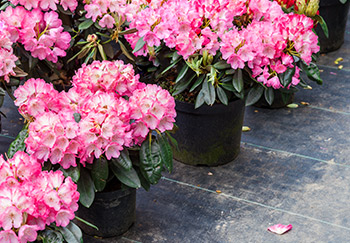
If you’re really set on planting out you ericaceous plants into the soil of your actual garden instead of a container – perhaps you’ve found an ideal shady spot or you’d like to make a display with non-ericaceous plants – there is actually a handy little trick you can try. To plant ericaceous plants in non-ericaceous soil, dig out a large enough hole in your soil, line the edges with a sheet of plastic, pop some holes in it for drainage and fill the hole up with your ericaceous compost. There is some risk involved in this method but if you’re really set on, say, combining hydrangea with roses, go for it!
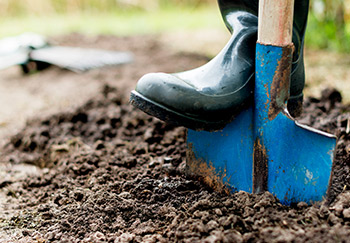
Ericaceous compost performs best when combined with a specific ericaceous plant food. Feeding is an important part of growing these unique plants, and you can go with either granular or liquid feed. An ericaceous plant feed will contain all the specific nutrients which these plants need to flourish. A continual-release feed is very useful for those who don’t have the time for regular feeding and these will normally only need to be topped up once every six months. A liquid feed is just as good if you prefer the routine or regular feeding.
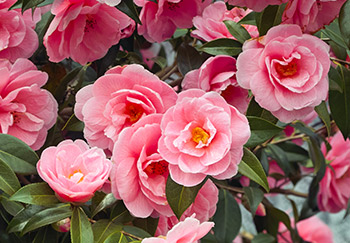
Most ericaceous plants happen to be shallow rooted. This means they are somewhat prone to drying during hotter weather. The best way to account for this is to mulch well ahead of planting – to ensure a soil which holds moisture well – and then to water regularly to prevent drying out. You can of course simply check to see if the soil is getting dry and this will pretty reliably tell you when to water. In the summer, however, you can expect to be doing it about once a week!
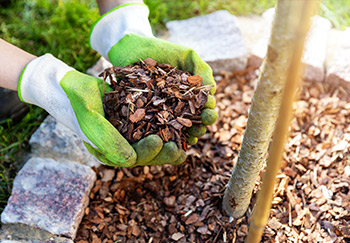
Now You Know
Ericaceous plants and their otherwise acid-loving relatives occur together in nature, having shared a home together since before there were gardeners around! As such, many people feel there is a deep natural harmony to these plants when grown together. With the use of a bag of ericaceous compost and some containers, you can recreate this winning combination in beautiful displays which can be tweaked and moved around to suit your preferences. Ericaceous compost is certainly the way to go for a distinct floral effect.
